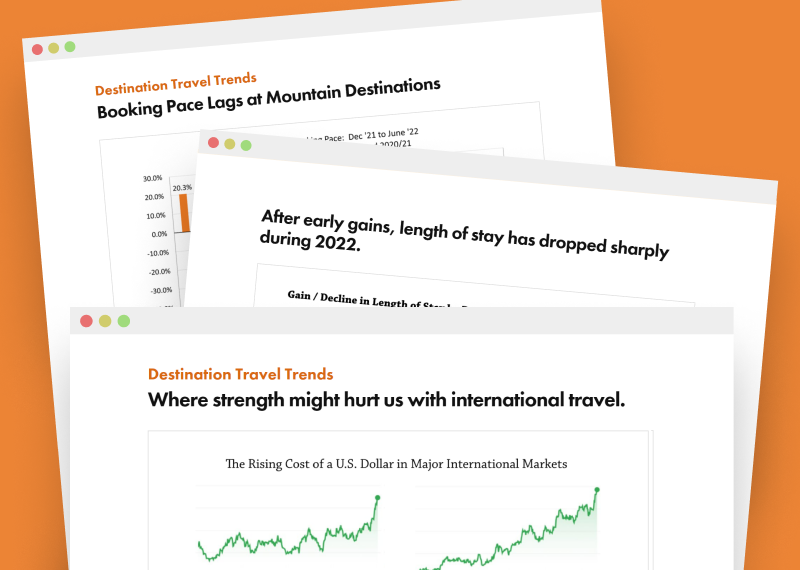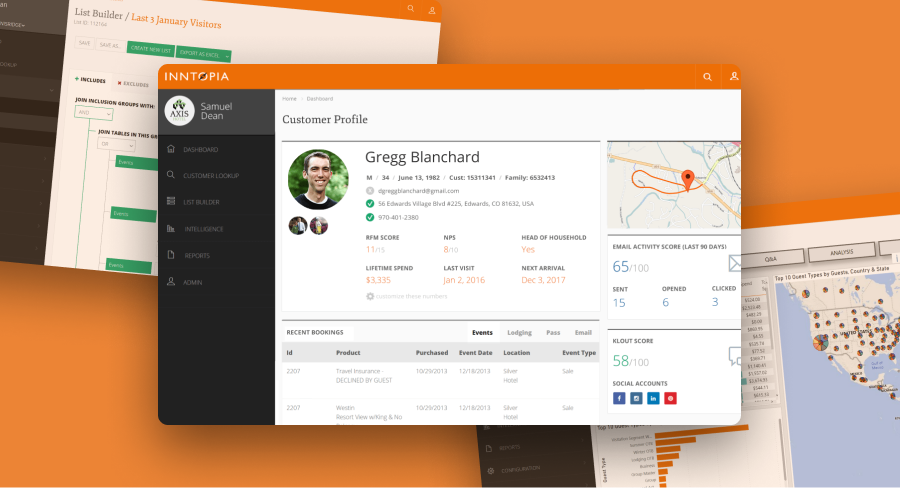
A resort customer relationship management (CRM) tool is one of the most important tools in the quiver of a resort’s marketing team, call center staff, and front desk. Yet it’s also frequently misunderstood by members of each of these teams. While similar to a hotel CRM or hospitality CRM in concept, a resort typically has many more systems and many more experiences and ways for a guest to interact with the resort that leads to a few unique challenges.
In this guide we’ll dig into two key questions when it comes to resort CRM technology:
- What is a resort CRM?
- How does a resort CRM work?
- Who needs a resort CRM?
That second part will also lead us through why you should use a resort CRM like Inntopia Marketing Cloud, so we’ll tie various use cases into that second section as well.
What is a resort CRM?
Unlike hotels where guests have very similar experiences to one another when they’re on property and, in turn, fairly similar reasons for booking, resorts see a much more diverse behavioral profile across their guests. This is a unique challenge within this corner of the hospitality industry. Some guests just come for the day to do a single activity, some guests make quick weekend trips from a nearby city, and others visit from thousands of miles away and stay for a week or more exploring every activity on offer over and over again.
A resort CRM is a system that helps organize all of that behavior into a way that allows the resort to make smarter decisions around marketing, guest service, and the products and customer experiences they offer. In effect, there are two key areas that a resort CRM connects: the data you have about your guests and the interactions your team has with those guests. Even more, a good resort CRM will everything you know about all the guests that visit various parts of your resort and allows your team to use that information to better communicate with guests on both the individual and aggregate levels to generate customer loyalty through service or revenue through upsells, upgrades, and direct bookings.

A resort CRM will act as a bridge between your guest data and your resort teams.
How does a resort customer relationship management (CRM) system work?
A resort CRM is a customer relationship management tool designed specifically for the resort and hotel industry that includes five key areas of functionality:
- It aggregates guest data from all your systems.
- It cleans this data and removes duplicates.
- It organizes guest data into comprehensive guest profiles.
- It makes these profiles accessible to every team.
- It enables automation and alerts based on key behavior.
Let’s dig into each of these individually.
#1) Your CRM should aggregate guest data from all your resort’s systems.
Resorts while related to the hotel industry, typically differ from boutique hotels and hotel chains in that they offer much more of a guest experience than simply a place to sleep. So being, resorts often have multiple systems they use for selling rentals, spa, dining, activities, tickets, lessons, tee-times, and more. Which means that in order to provide a complete guest profile, a resort customer relationship management platform integrates with all of these systems – reservation systems, surveying tools, marketing platforms, etc. – to pull the data out into a central location.
Depending on the constraints of each source system and the needs of the resort, this can happen in real-time or on a recurring basis through a nightly or weekly data sync. Either way, CRM tools are able to extract all new and historical information from each system and save it centrally in the resort CRM database.
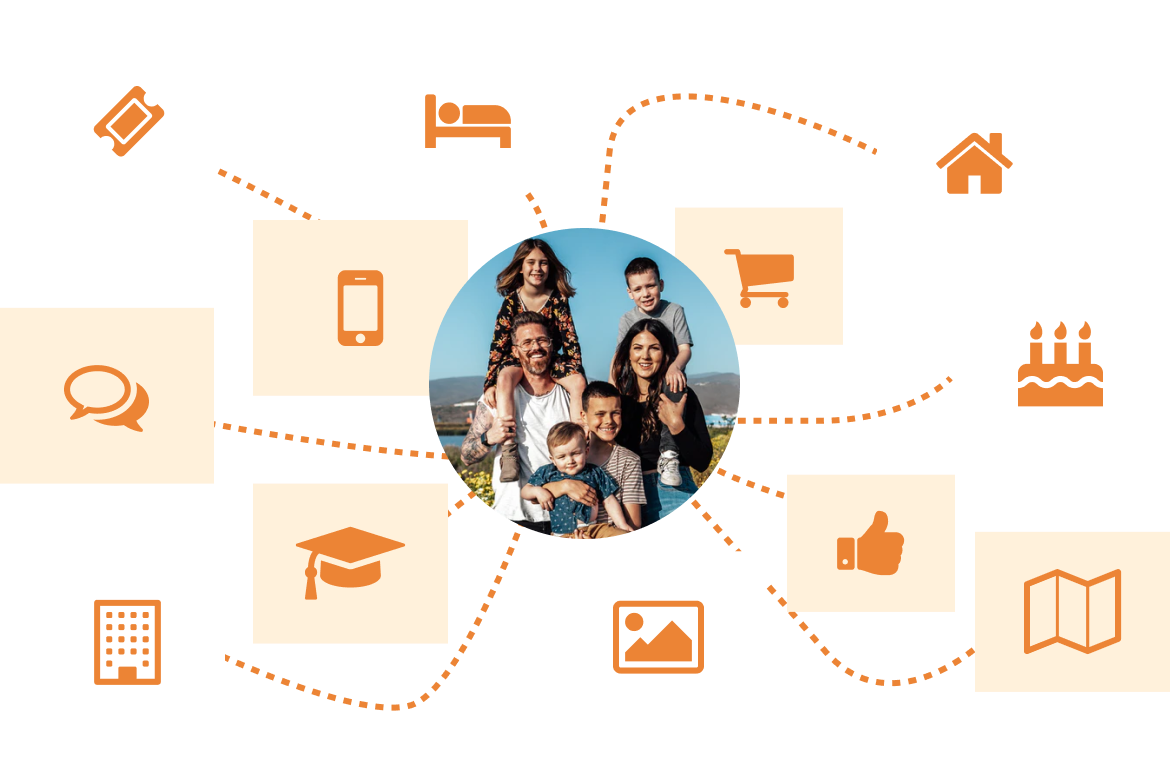
A resort CRM combines, households, and cleans data from all your systems.
#2) Your CRM should clean resort guest data and removes duplicates.
What that data arrives in the central database, it’s in the format the property management system (PMS), POS, tee-sheet, or other system saved these transactions and guest details. Typically, these rows of customer data are organized by individual transactions which means there are multiple records for each guest, there are typos when a guest booked, a guest may have booked with various email addresses or physical addresses, and these challenges exist uniquely across each source system.
A resort CRM solution starts by cleaning this data, standardizing it, and starting to clean up issues and changes that would prevent the system from tying together a single guest’s behavior across multiple systems.
#3) Your CRM should organize guest data into comprehensive guest profiles.
With the data cleaned and standardized, it can now be organized into guest profiles. And, more specifically, these records need to reflect the household each guest is associated with. This is a critical step for any resort CRM because your team needs to see all transactions from a single household in one place to truly understand their behavior, preferences, and value to the resort.
For example, if Sam Jones booked tee-times in February, returned with his family in April and visited the waterpark, then his wife booked lodging for a trip in June, and bought season passes for the kids in July, these need to be all visible within Sam’s profile so you’re getting a full view of that guest relationship with the resort. These metrics will also be available in the aggregate through reports, dashboards, and queries.
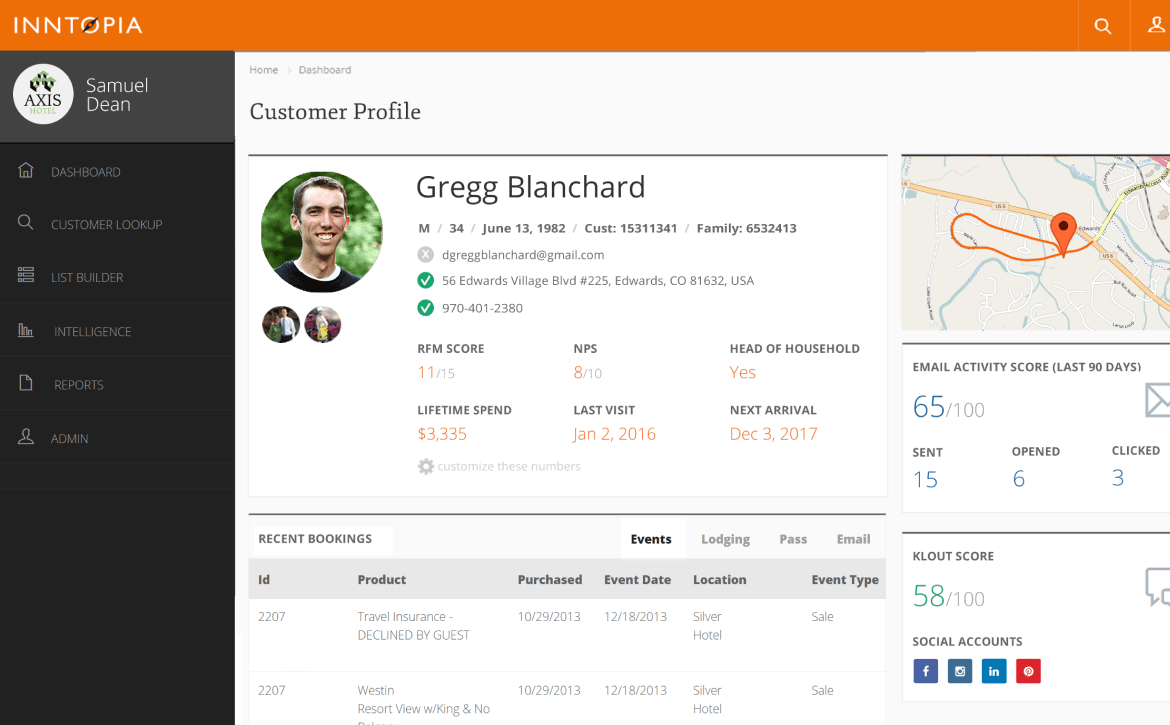
A resort CRM guest profile will show a guest’s behavior across all your systems.
#4) Your CRM should enable make these profiles accessible for guest service, sales, and marketing campaigns.
Next, similar to a hospitality CRM, the resort CRM makes these profiles accessible to every team that interacts with guests. The marketing team, for example, needs to be able to build lists of guests based on multiple data points within these profiles for better targeting their campaigns. The call center needs to quickly find a guest’s profile when they call to make a reservation so they can tailor recommendations based on their previous booking history. A resort sales team can query guests to find leads based on guest history or behavior. And the concierge needs to be able to track high RFM guests as they check-in to help these guests have a successful trip to preserve that loyalty.
A resort CRM has tiered access and various access points to ensure every team gets access to guest data where and when they need it to increase guest satisfaction and guest loyalty.
#5) Your CRM should enable marketing automation and alerts based on key guest behavior.
Finally, a resort CRM will allow resort teams to automatically reach guests with messages via channels like email marketing or SMS marketing based on their behavior or be notified of certain types of behavior so they can intervene. Let’s dig into two quick examples. If the post-stay survey from a high value guest shows an NPS of 3, the resort CRM can alert a call center team member or concierge so they can reach out to this guest and resolve the concern.
Beyond guest service, these messages can drive revenue, increase occupancy, or compliment a guest loyalty program. For example, if a guest books a 5-night stay but fails to buy tickets to activities when they book, the resort CRM can send an automated email before check-in with a dynamic list of items they should consider booking but didn’t include in their initial itinerary. Again, this is possible because the guest profiles in the resort CRM accounts for behavior across all systems and allows your team to deliver automated marketing campaigns based on that behavior.
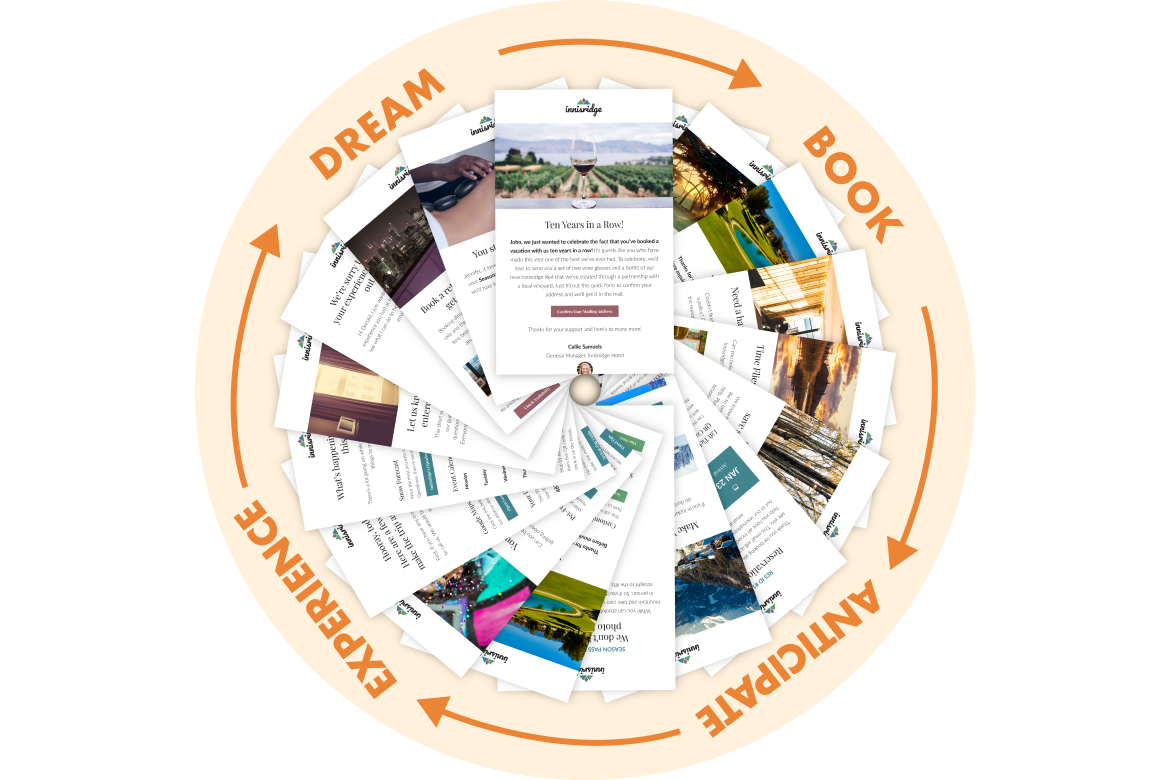
Marketing automation can use resort CRM data to reach guests throughout the travel cycle.
What are the common mistakes resorts make when choosing a CRM?
Resorts will typically make three mistakes when choosing a resort CRM that aren’t completely their fault. The predominant voices in the hospitality CRM space have also been the ones who don’t offer some of this functionality, so sometimes it’s simply a matter of awareness.
#1) Choosing a single-system CRM.
As we’ve talked about, resorts are complex businesses that require running multiples systems beyond just a PMS in order to take reservations and manage the guest experience. The biggest mistake resort’s will make is choosing a hotel-specific CRM that is only designed to integrate with their PMS and then forces the resort to manually load data into their systems or another tool in order to combine data and send marketing campaigns to segments of guests who purchased other products from other systems.
#2) Choosing a rigid CRM that can’t be customized.
Because each resort sells such a unique combination of products to such a unique variety of guests, every resort is very different from other resorts even when they sell a similar product mix. Resorts will often choose a CRM purely on price and sacrifice the ability to use their own email templates, build custom guest traits based on their unique guests behaviors, or spin up marketing automations that are customized to their upsell or cross-sell needs.
#3) Choosing a CRM with inexperienced support.
A CRM is not a booking engine, let’s just be clear about that. A booking engine is what you might call a “set and forget” tool. While a CRM has some “set and forget” elements, a CRM is more of a platform to build your efforts on top of than a solution you plug in and let run. Which means that you need support that can understand your goals, needs, and constraints and be able to work with you to build marketing and workflows that help you take advantage of the opportunities inside your guest data.
It’s why we invest so heavily in our Account Management team and hire people with, on average 5-10 years of resort CRM experience. That way they aren’t expecting you to be the experts on resort CRM. You can be the expert on your resort, they can be the expert on CRM, and together you can do something that is many times more effective than a plug and play CRM solution.
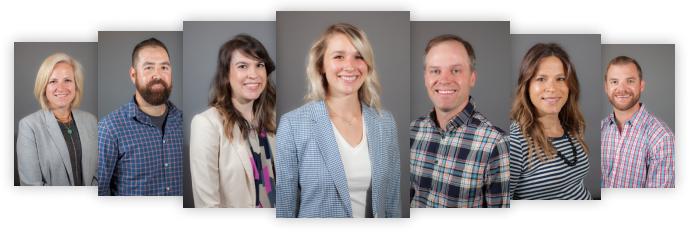
lnntopia’s team of resort CRM account managers average 10+ years of experience.
Who needs a resort CRM?
To some degree, every resort with a PMS and at least one other system needs a CRM but the priority of the various parts of the CRM will differ based on your property. A resort that doesn’t have as many one-to-one touchpoints with guests but instead does a large amount of volume will need a resort CRM to be able to understand the patterns of behavior with those visitors and design marketing campaigns that reach very specific segments of guests with highly relevant offers. A resort that is smaller and offers a much more high-touch level of service to each guest may prioritize access to individual guest profiles by multiple teams across the resort.
Either way, the one thing that every resort needs is centralized, clean, comprehensive guest profiles and that is what a resort CRM truly unlocks. When you sell multiple products from multiple systems, you need a way to see how guests migrate between those systems throughout their experience. Even if you sell various products through the same system, that system will never be able to achieve the level of data-cleansing and deduplication that a purpose-built CRM can. A resort CRM can also add the ability to bring in other customer data sources such as:
- Demographic data appends
- Marketing behavior
- Survey behavior
- Social media behavior
A resort CRM like Inntopia Marketing Cloud unlocks insights into the behavior of your guest in a way no other system can and, if implemented well, creates incredible opportunities for guest service, targeted marketing, and performance analysis that you simply can’t unlock when you guest data in siloed in various systems.
Have a question? Just ask.

Tyler Maynard
SVP of Business Development
Ski / Golf / Destination Research
Schedule a Call with Tyler→

Doug Kellogg
Director of Business Development
Hospitality / Attractions
Schedule a Call with Doug→
If you're a current Inntopia customer, contact support directly for the quickest response →
Request Demo
A member of our team will get back to you ASAP to schedule a convenient time.


